Interview #30: The art of Marina Ruiz
Marina Ruiz talks about the way she combines traditional and digital tools in her picture books
Hello art community!!! Today's interview is about picture books. I'm realizing that I'm bringing a lot of book illustrators to the page. Are you finding this helpful? :)
For those just finding me - I’m Madalina, an artist and illustrator who loves discovering and talking to many fellow artists. I now share these conversations through monthly interviews available to read for everyone :)
Marina Ruiz (aka mandarina_ruiz) is a Spanish illustrator who lives in the UK after graduating with a MA in children’s book illustration from Cambridge School of Art. She seeks inspiration in everyday life and little moments around which she creates stories and characters. Her artworks feature lovely textures and delicious pops of color.
✿ Hi Marina and thank you for joining forArtists. If you look back in time, can you pinpoint the steps that led you to the artist you are today?
Ever since I was little I’ve always loved making things, painting, drawing, playing music and making little crafts. When I had to decide what to study for my undergrad, I wasn’t sure about what path to take, I just wanted to keep making art. I didn’t even know you could study illustration as a degree back then, so I went on to study Fine Arts in Madrid. Painting and printmaking became my favourite modules. Also, looking back, I can see how I brought narrative into most of my uni projects, turning the assesments into little books or sequential images.
After this, I moved to the UK with my partner and ventured into studying the MA in Children’s Book Illustration at Cambridge School of Art, which was a life-changing experience! I had illustrated some books by then, but after this MA I felt much more confident and prepared to make my own books. It was also lovely to have a community of people who cared about and loved the same things I did.
✿ What MA’s teachings were crucial in shaping your current skills and style?
As with my Fine Arts degree, printmaking was one of the pillars of my MA. I spent every day in the printroom. Being surrounded by other artists, learning and refining new printing methods was hugely inspiring to me. And, even though I don’t usually make the final images for my books entirely on print, I believe that the way I build my images is hugely influenced by it (thinking in layers, negative space, textures and color).
Something else that completely changed my way of working was developing a sketchbook practice, I cannot live (or think!) without a skethbook now – it’s where all my ideas are born and where I play, experiment and develop most of my work.
✿ You use a large variety of mediums including inks, gouache, pencils, pastels.. What is your favorite combo?
I don’t think I have a favourite combo, and it depends a lot on the project I’m working on. I actually try to shake things up a bit every time I start something new, as it keeps me on my toes and stops me from getting bored.
I usually try to find the best medium to capture what the project needs, that might be the softness and motion of pastels, the immediacy of a pencil line or the deep and evocative textures you can achieve with black ink. Finding out what materials to use is part of the joy of making the work.
I usually make most of my work on different bits of paper, scan it all into my computer and arrange it on photoshop. I also love challenging myself once in a while and trying new ways of working, like not allowing myself to use the computer at all, or limiting my materials to just one or two mediums.
✿ Your colors are so vibrant and varied that it fills me with joy to look at them! How do you usually choose color palettes while maintaining harmony and balance in your illustrations?
I don’t have a predetermined way of choosing colors. I will usually choose a more or less limited palette for the book I’m working on, one that ticks off all the environments and moods I need to create whilst being concise enough to make the whole book feel consistent. This is usually a process of trial and error.
I guess I also have some colors that I keep coming back to, warm yellows and pinks for example. I often make little color thumbnails before I move on to painting the final image, this lets me play around and see if the color combination is working, if I’m achieving a tonally balanced image or if I need any changes. As they are quite little I can be very direct and instinctive, and then they serve as a great reference when I’m working on the big piece.
✿ Can you walk us through the process of creating one spread for the In Time picture book?
The first thing I would do is sketching a lot to figure out what goes on in that particular spread. Then, I would refine it into a composition – which usually means drawing little thumbnails in my sketchbook. Once I’m happy with this, I would move onto a more detailed black and white rough (dropping the text in), and this will then get checked and approved by my publisher. Once the rough is approved, I move on to making the artwork.
As I was saying earlier, I usually start by making little color thumbnails and testing things out, seeing how the materials can be used on the spread.
I paint (sometimes several times to get things right) and produce most of the elements of the page on paper, which I later scan into my computer and import to photoshop. I edit it, move things around and adjust levels and colors until I’m happy with it. Sometimes I go back to it once I’ve made more images for the book, to see that if it looks consistent with the rest.
✿ Your illustrations are so expressive and full of movement. What are the key ingredients to achieve this liveliness?
Thanks so much! I don’t think I’ve got a secret for this. I work quite intuitively and I love movement and motion. Thinking of dynamic compositions, Molly Bang has a great book on this, which I really recommend.
I usually think about the elements – is the wind blowing? Would that move my characters hair and clothes? Are my characters still or moving? How do kids move in comparison to adults? Can I express that through diagonal lines and curves? Can I avoid symmetry to create a sense of motion?
Something else that helps me is not working on the same image a million times, repeating the same poses, as this can often lead me to stiff and overworked drawings. A lightbox can be very helpful too, because you have a reference underneath and you can be a bit more playful with your marks.
✿ As a traditional illustrator, how do you deal with editing and correction requests from the publisher?
It’s really important for your publisher to understand your process, and how it might affect the ability or ease for you to make corrections.
My roughs are usually detailed enough for them to give me feedback regarding the drawing and composition before moving onto finals, which saves a lot of heartache. Also, as I scan my work and work on digital layers, some bits are easier to move around or edit, than if I had made everything just on one piece of paper.
✿ Do you have a drawing/sketchbook routine?
I don’t have a daily routine, I wish I did, but I struggle to find the time (and discipline!) for that. How I use the sketchbook depends on the stage of the project I’m working on. The early days of a project are very much sketchbook-based, I dump all my ideas onto the pages and try to make sense of them. I also use it for primary research, drawing from life or videos to try to make sense of what I need to draw, or to spark new ideas.
Once I’m working on the final artwork I use the sketchbook to play around with color and test materials, approaches, shapes… or to figure out how to do something that I’m struggling with.
✿ What are your dream projects?
So many! I would love to do something folktale/folklore related, where I could really push the storytelling quality of my illustrations. Or a book about music! I would also love to branch out and do books for older kids (like fiction books) and for babies. I made some cloth baby books recently and really loved it.
I would also love to work on something more lyrical, like a poetry anthology, that would allow me to be more metaphorical and experimental with my images. Or being commisioned to do a mural, or illustrated gifts like puzzles and toys. You name it!
✿ What people don’t know about you, the person behind the art?
I’m not a very secretive person, but these are some things about me:
- I used to play the electric bass in a band
- I love hiking and being out in nature
- I’m becoming a mother very soon and cannot wait ♥
- I teach illustration at uni and I LOVE it
- I love solving riddles
- I could live off Spanish tortilla, ripe tomatoes and olive oil on bread and
oranges.
☆☆ To learn more about Marina's work you can visit her Instagram and website. Her books are available on Bookshop UK.





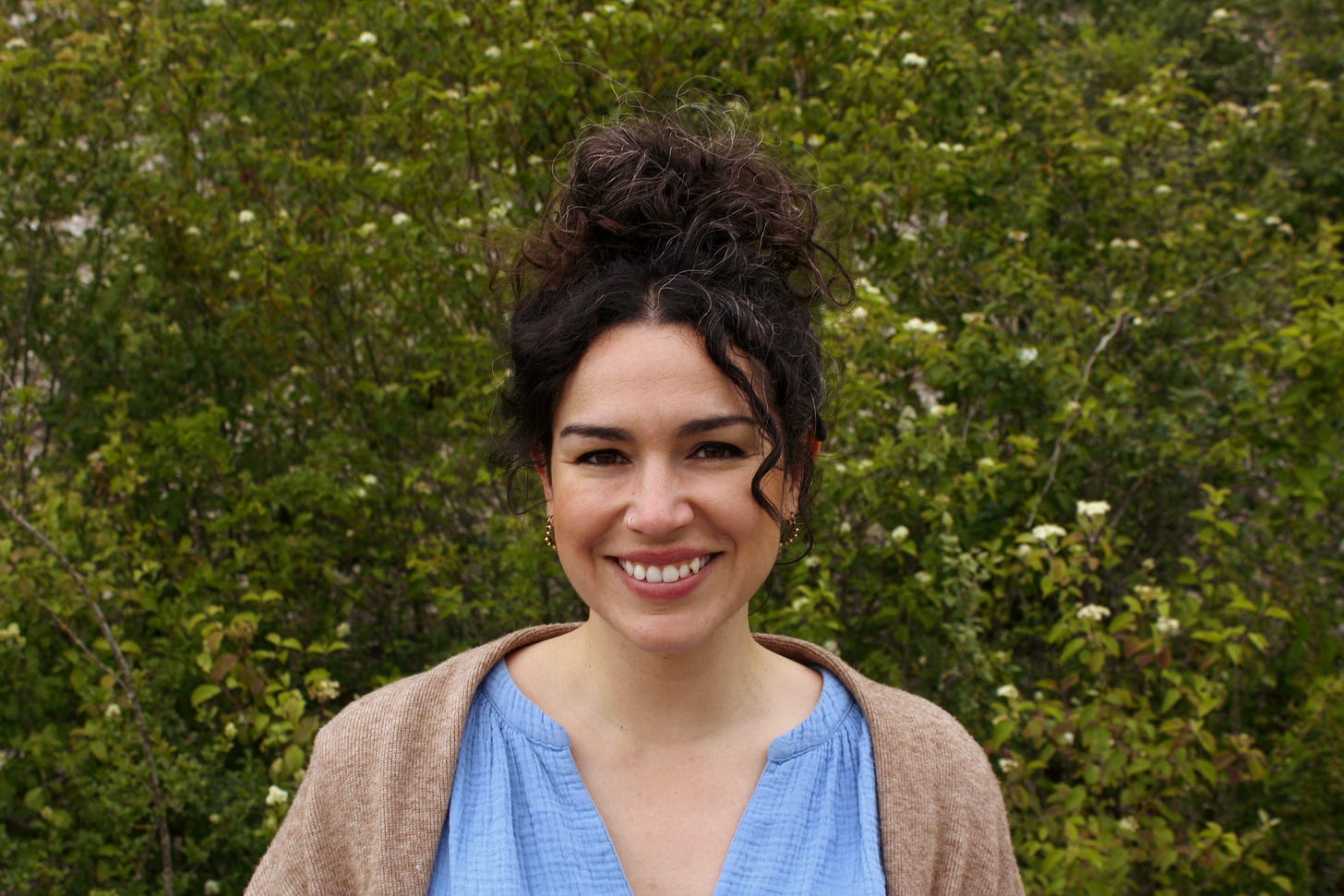
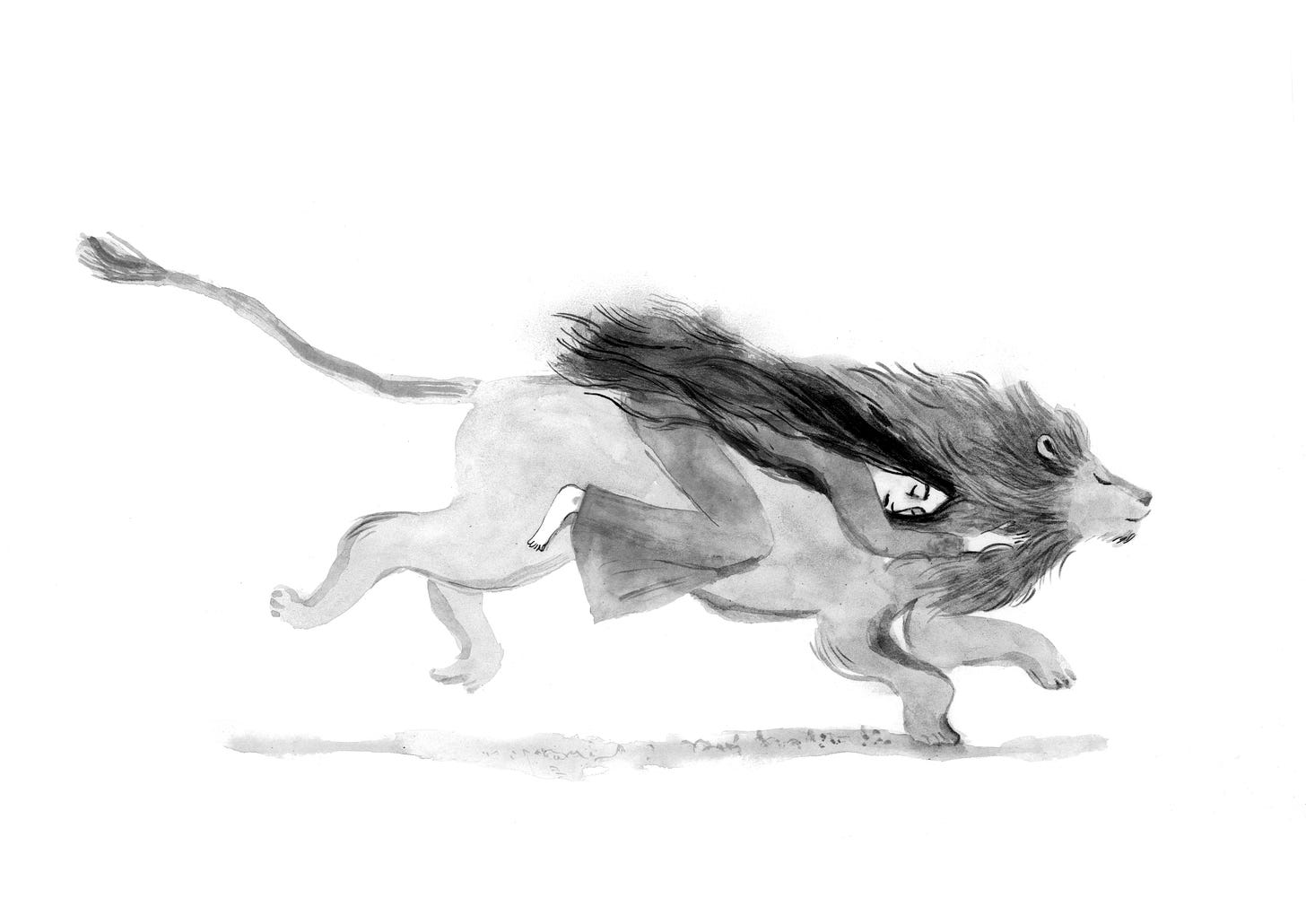
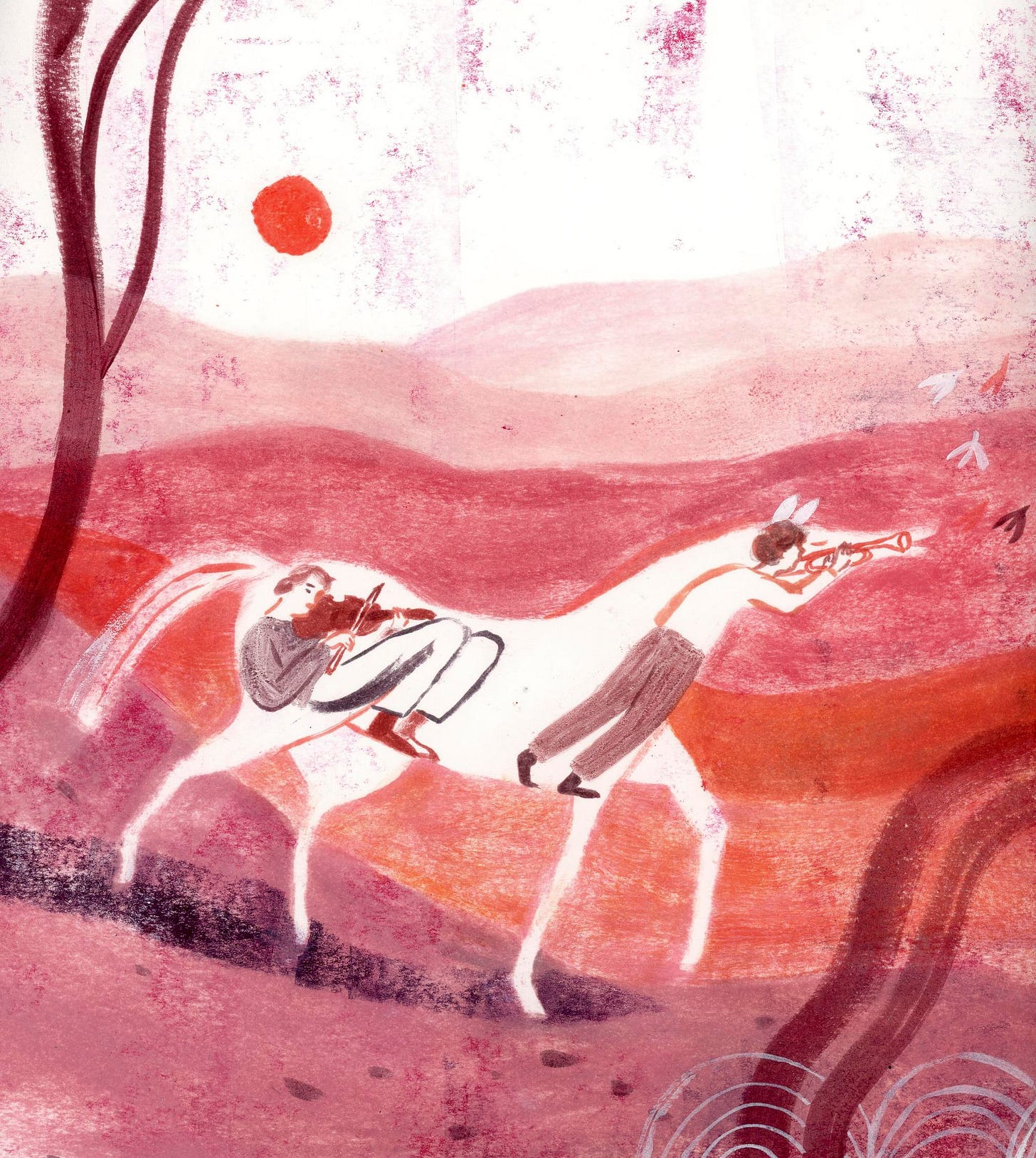
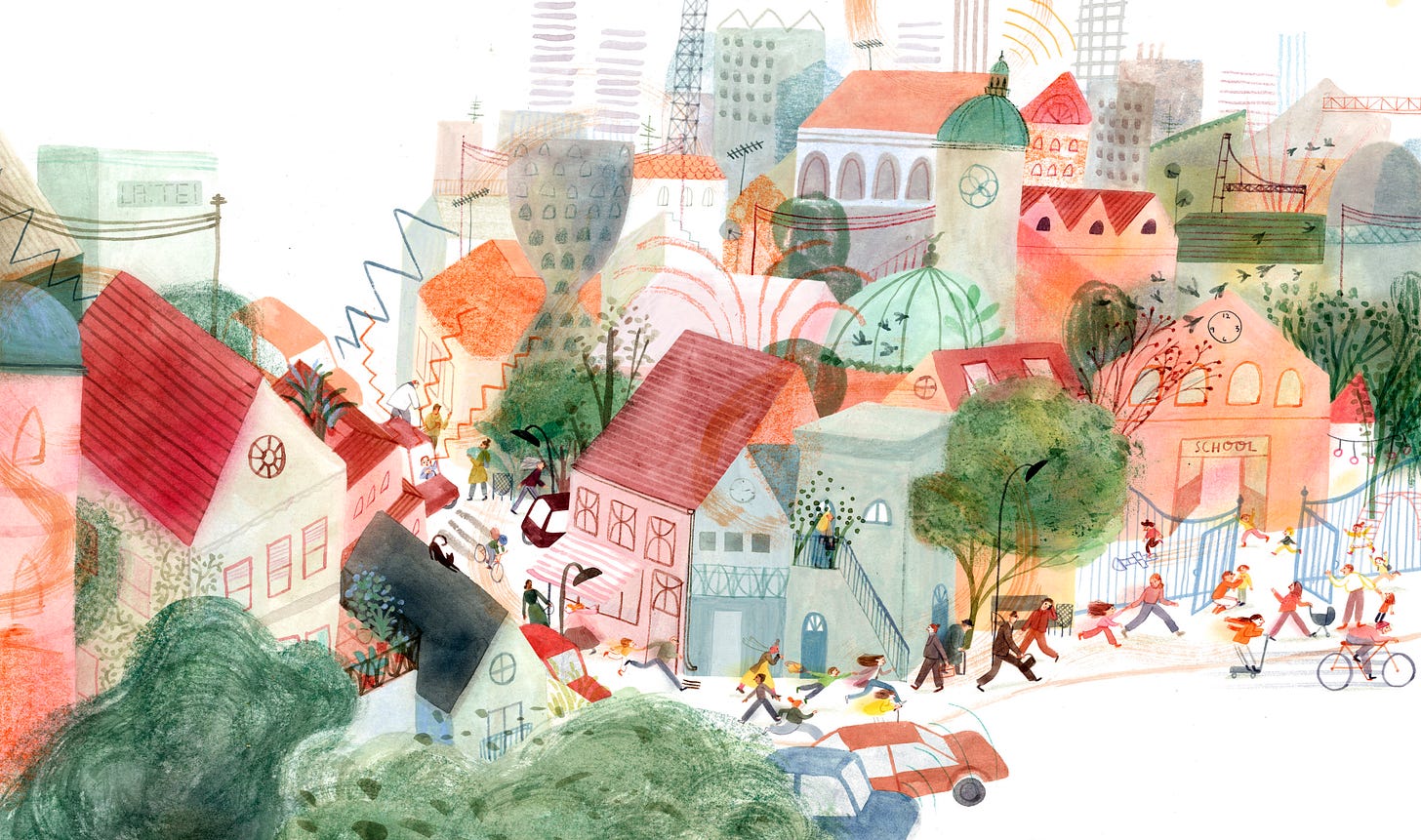
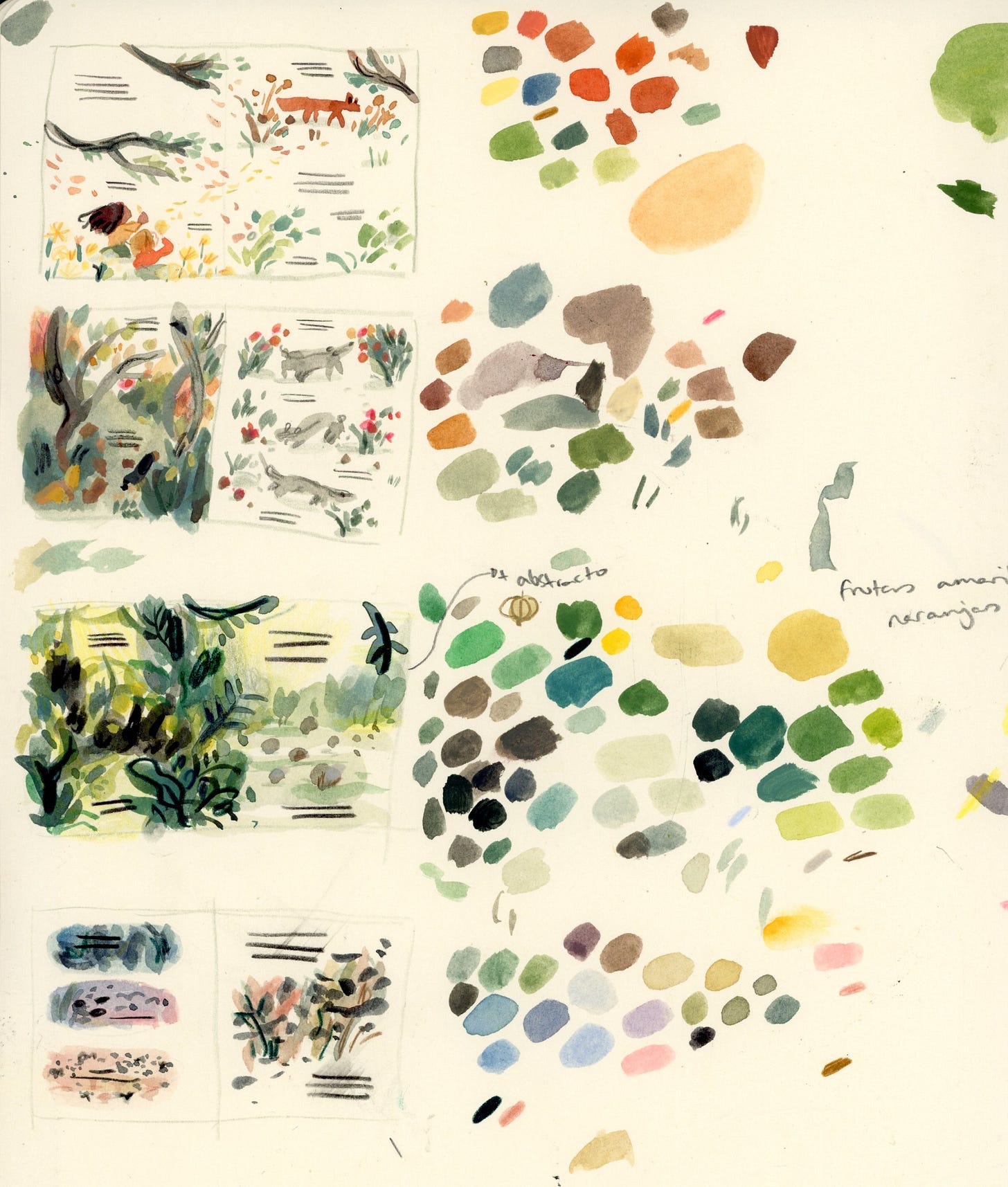
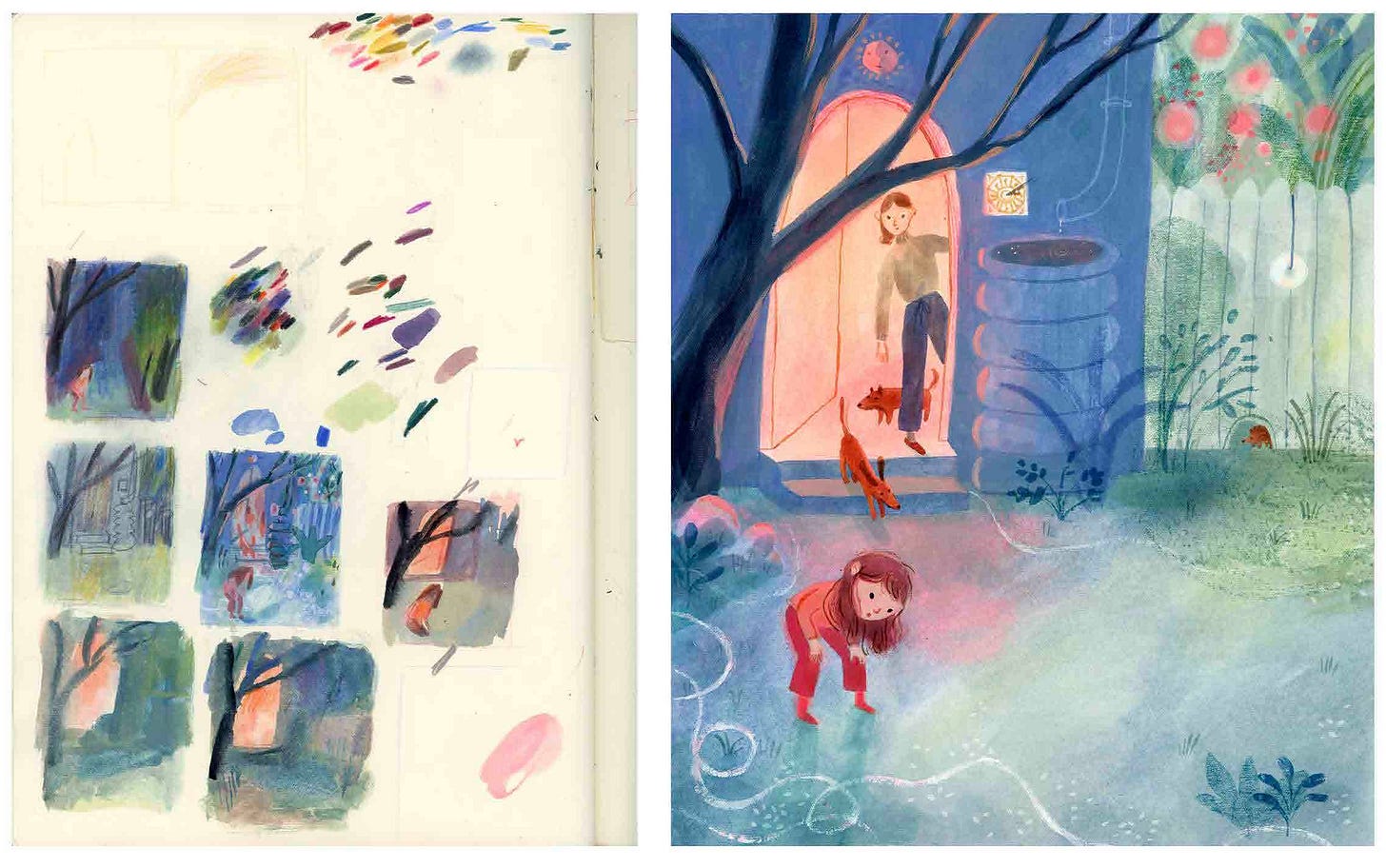

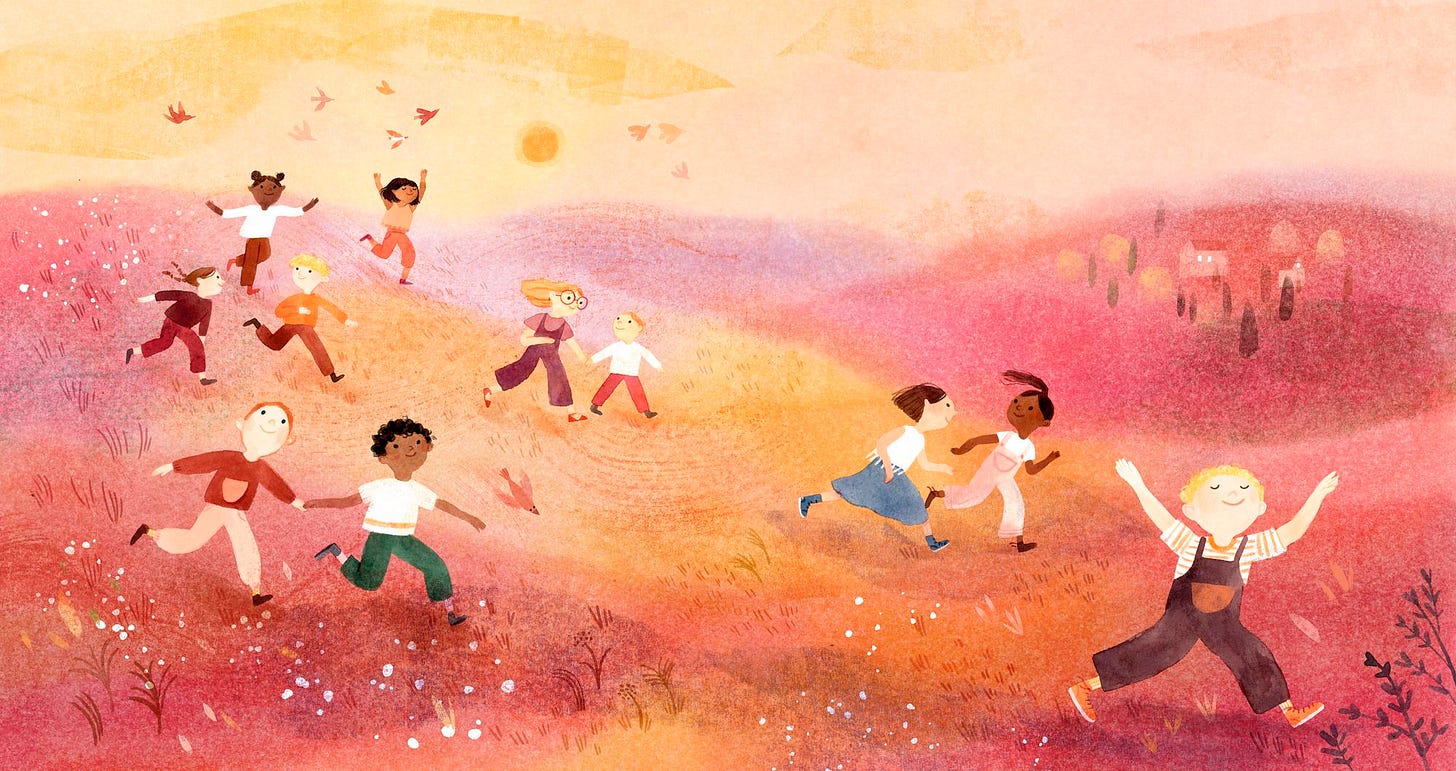
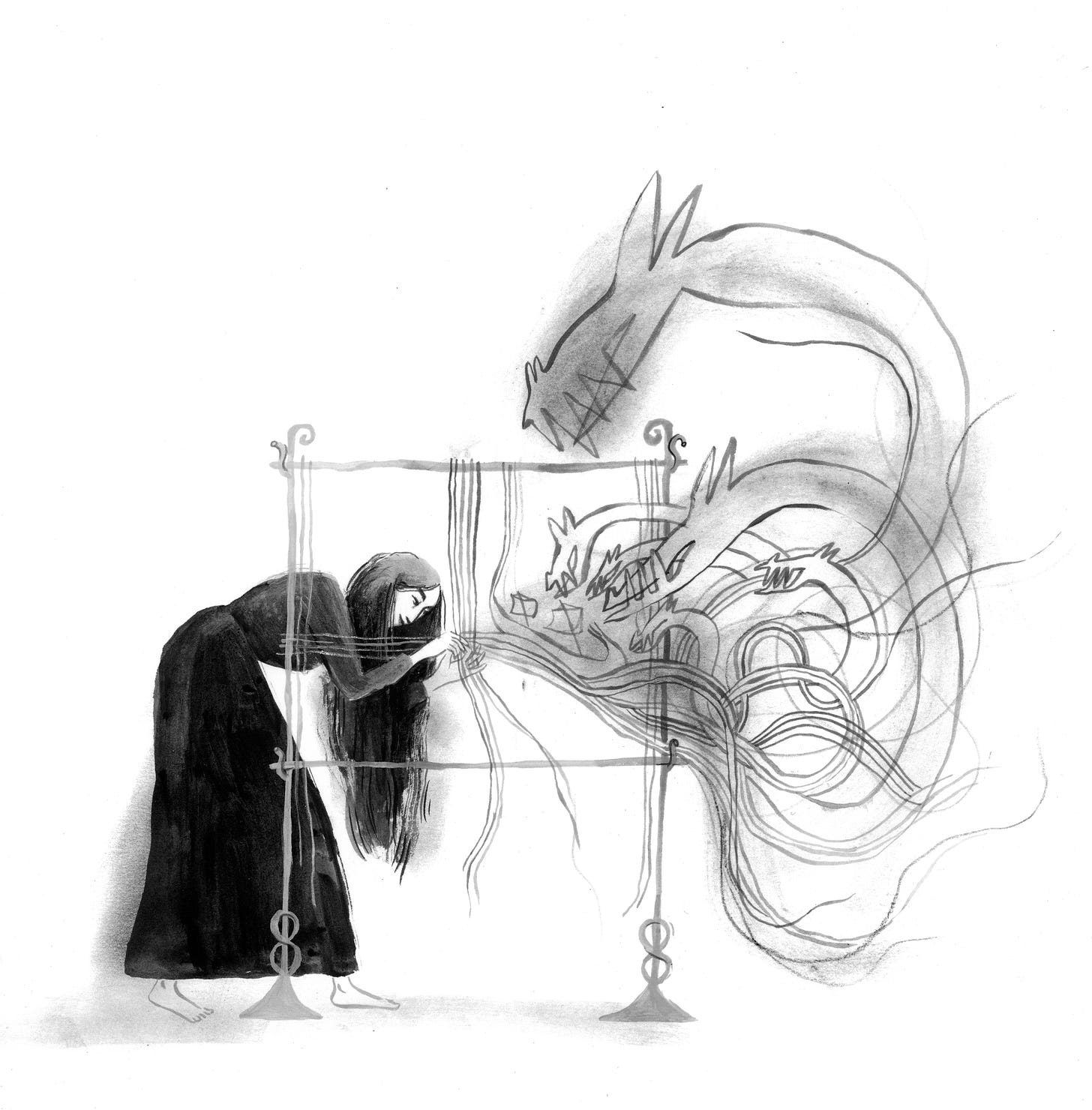
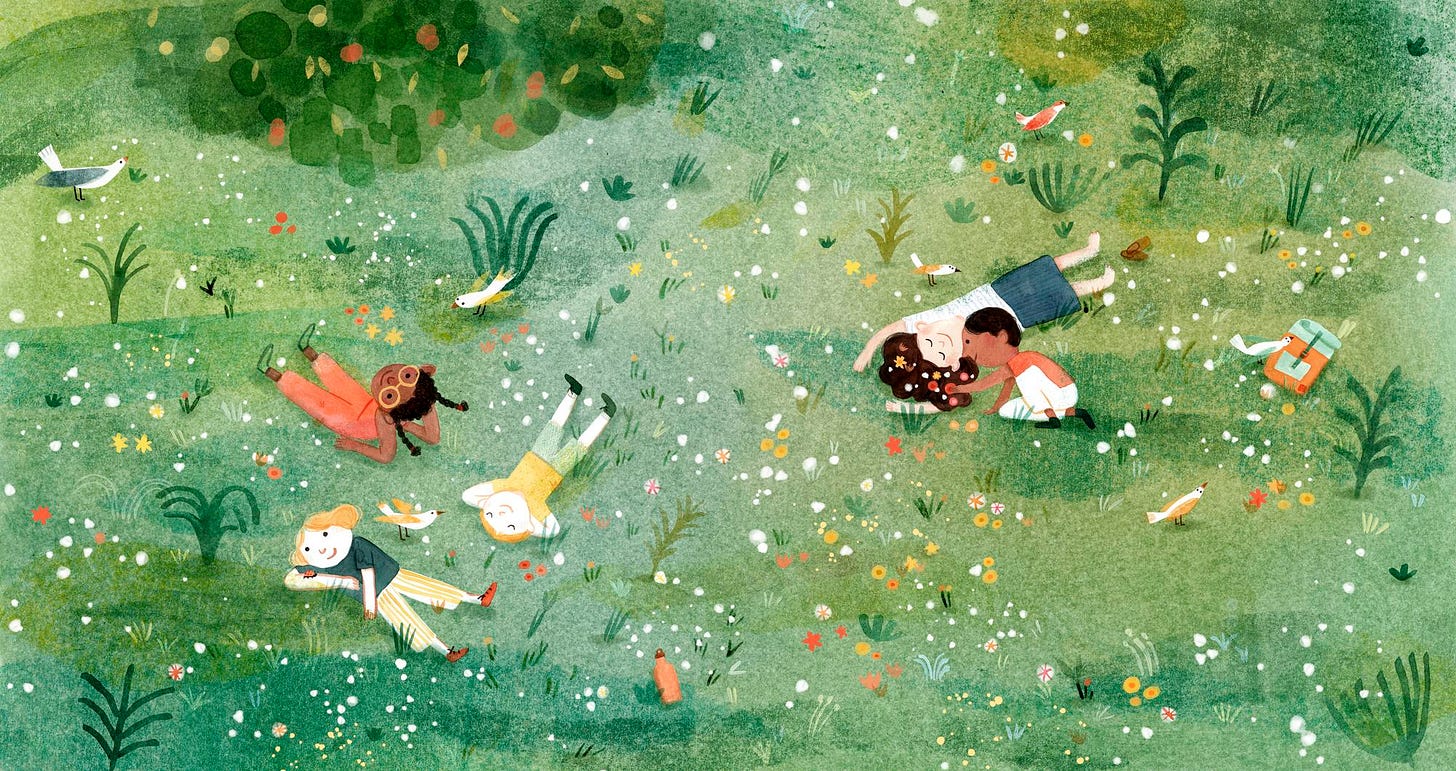
It's always so great to read about illustrator's paths - how they got to where they are and how they manage their work.
Thank you for sharing these interviews. Marina has such a lovely and bright personally, just like her gorgeous illustrations 😍
I'm so happy you're enjoying the interviews :) I love Marina's playful artwork too!